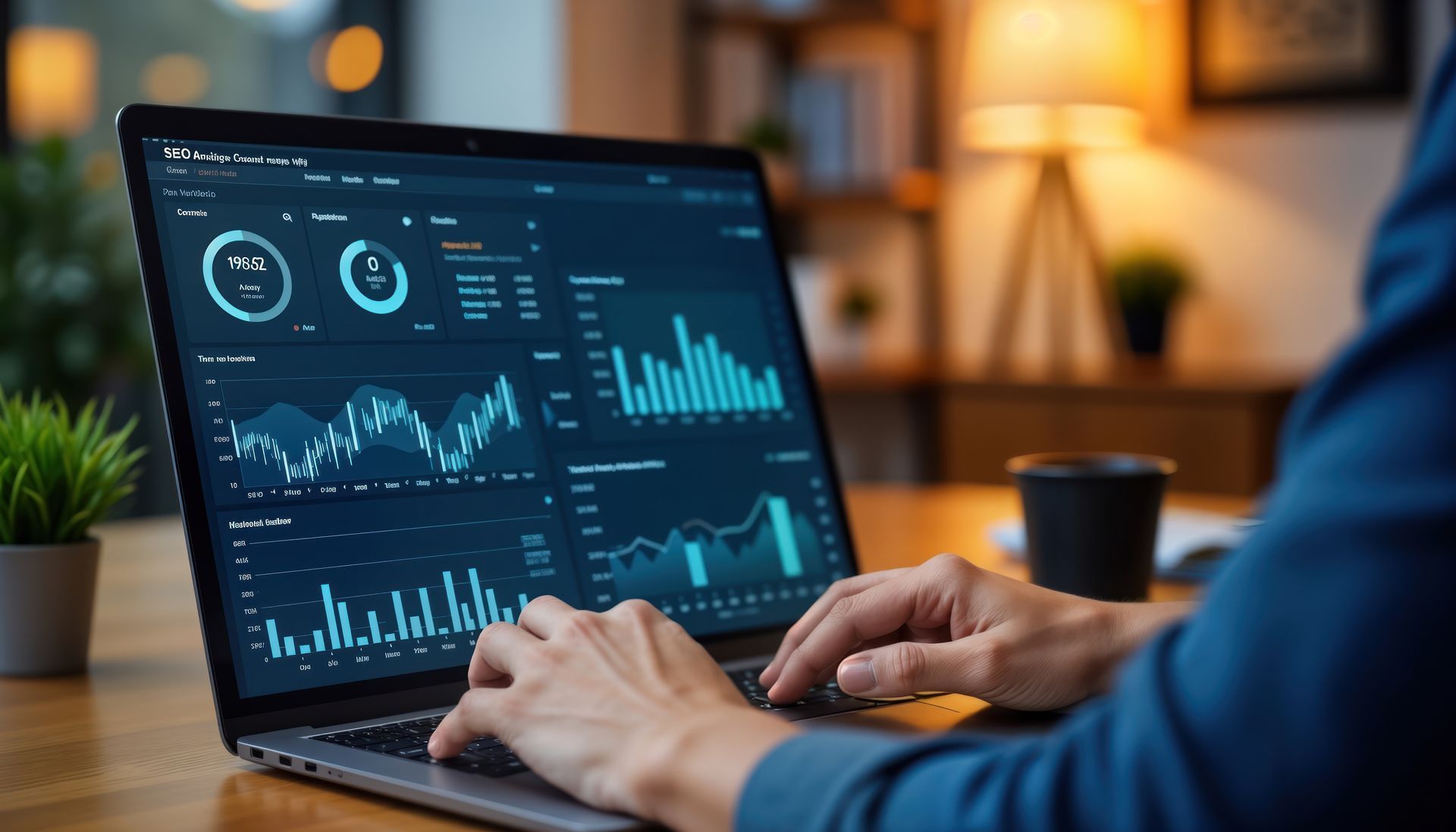From Tortoise to Turbo: How to Optimise Your Website Speed for Better Rankings
From Tortoise to Turbo: How to Optimise Your Website Speed for Better Rankings
Is your website moving at a snail's pace while your competitors soom ahead? It's time to trade in your tortoise for a turbocharged website that leaves the competition in the dust. In today's digital landscape, website speed is not only important for user experience, but also crucial for search engine rankings. Slow-loading pages can drive potential customers away and push your website down the search results.
In this article, we'll reveal the secrets to optimising your website speed and propelling your rankings to new heights. We'll explore how website speed impacts user engagement, bounce rates, and conversions. Whether you're a small business owner, a seasoned marketer, or an aspiring SEO professional, these proven strategies will help you transform your website into a high-performance powerhouse.
From minimising file sizes and reducing server response time to leveraging browser caching and CDN integration, we'll cover all the essential techniques you need to know. Get ready to make your website faster, and watch as your rankings soar. It's time to leave the tortoise behind and embrace the speed and power of a turbocharged website.
The importance of website speed for SEO
Website speed is a key factor that search engines consider when determining rankings. Google has made it clear that faster-loading pages are more likely to rank higher in search results. This is because search engines prioritise websites that provide the best user experience, and a slow website can be frustrating for users.
In addition to search engine rankings, website speed also affects user engagement. Studies have shown that users are more likely to abandon a website if it takes too long to load. This leads to higher bounce rates and lower conversion rates, ultimately impacting your bottom line.
To stay ahead of the competition and ensure your website ranks well in search results, it's crucial to optimise your website speed. Let's dive into the factors that affect website speed and how you can measure and improve it.
Understanding website loading times
Before we dive into the strategies to improve website speed, it's important to understand the different components that contribute to loading times. When a user visits a website, several processes take place behind the scenes to deliver the content to their browser.
The first step is the user's request to access a webpage, which is sent to the website's server. The server processes the request and retrieves the necessary files and data to display the webpage. These files include HTML, CSS, JavaScript, images, and other resources.
Once the server collects all the required files, it sends them back to the user's browser. The browser then interprets the files and displays the webpage to the user. The time it takes for all these processes to happen is what determines the website's loading time.
-
Factors that affect website speed
Now that we have a basic understanding of how websites load, let's explore the factors that can impact website speed. By identifying these factors, you can pinpoint the areas where your website may be lagging and take appropriate steps to improve its performance.
1. Server Response Time: The time it takes for the server to respond to a user's request plays a significant role in website speed. A slow server response time can delay the delivery of files, resulting in slower loading times.
2. File Sizes: Large file sizes can significantly slow down your website. Images, videos, and other media files can be particularly resource-intensive. Optimising file sizes by compressing and resizing them can have a significant impact on website speed.
3. Caching: Caching involves storing static versions of your website's pages and assets on the user's device or a server closer to them. This enables faster access to content, as the browser doesn't need to retrieve all the files from scratch every time a user visits the website.
4. Browser Rendering: The way browsers interpret and display website files can also affect loading times. Poorly optimised code, excessive JavaScript usage, and render-blocking resources can all contribute to slower website speed.
-
How to measure your website's speed
Before you start optimising your website speed, it's important to measure its current performance. This will help you identify areas that need improvement and track the impact of your optimisation efforts.
There are several tools available to measure website speed, including Google's PageSpeed Insights and GTmetrix. These tools analyse your website and provide detailed reports on loading times, file sizes, and other performance metrics.
Once you have the results, pay attention to the areas that need improvement. Look for opportunities to reduce file sizes, minimise server response time, and optimise your website's code. With these insights, you can now move on to implementing the strategies to optimise your website speed.
-
Common issues that slow down websites
Before we delve into the optimisation techniques, let's first address some common issues that can slow down websites. By identifying and fixing these issues, you can make significant improvements to your website's speed.
1. Unoptimised Images: Large, uncompressed images can significantly slow down your website. Optimise your images by compressing them without compromising quality. Use image formats such as JPEG or WebP, and consider lasy-loading images to prioritise critical content loading first.
2. Excessive HTTP Requests: Each file on your website, including images, scripts, and stylesheets, requires a separate HTTP request. Minimise the number of requests by combining files, reducing unnecessary plugins, and utilising browser caching.
3. Unnecessary Redirects: Redirects can add unnecessary delays to your website. Review your redirect chains and eliminate any unnecessary redirects to improve loading times.
4. Slow Server Response Time: If your server takes too long to respond to user requests, it can significantly impact website speed. Consider upgrading your hosting plan or switching to a faster hosting provider to improve server response time.
-
Tips for optimising website speed
Now that you're aware of the common issues that can slow down your website, let's explore some proven strategies to optimise your website speed. Implementing these techniques will help you create a high-performance website that keeps users engaged and ranks well in search results.
-
Implementing caching techniques
Caching is a powerful technique that significantly improves website speed. By storing static versions of your website's pages and assets, caching reduces the time it takes to load content for returning users. Here are some caching techniques you can implement:
- Browser Caching: Set expiration dates for static resources like images, CSS, and JavaScript files to enable browser caching. This allows returning users to load your website faster by retrieving the cached files from their browser.
- Server-Side Caching: Utilise server-side caching mechanisms like Varnish or Redis to store static files and database queries. This reduces the load on your server and speeds up content delivery.
-
Minimising file sizes and optimising images
Large file sizes can significantly slow down your website. By minimising file sizes and optimising images, you can reduce loading times and improve website speed. Here are some techniques to achieve this:
- Compress Files: Compress your CSS and JavaScript files to reduce their file sizes. Minifying these files by removing unnecessary characters, spaces, and comments can also help improve loading times.
- Optimise Images: Resize and compress images without compromising quality. Use image compression tools or plugins to automatically optimise images as you upload them to your website.
-
Choosing the right hosting provider
Your hosting provider plays a crucial role in website speed. A slow or unreliable hosting provider can significantly impact your website's performance. Consider the following factors when choosing a hosting provider:
- Server Response Time: Opt for a hosting provider with fast server response times. Look for providers with data centers located closer to your target audience to reduce latency.
- Scalability: Choose a hosting provider that allows easy scalability as your website grows. Ensure they can handle spikes in traffic without compromising website speed.
- Support: Look for a hosting provider that offers reliable customer support. In case of any issues, quick and effective support can help resolve them and minimise website downtime.

Conclusion and next steps
Optimising your website speed is a crucial step towards improving user experience, reducing bounce rates, and boosting search engine rankings. By implementing the strategies outlined in this article, you can transform your tortoise-like website into a turbocharged powerhouse.
Remember to measure your website's speed using tools like Google's PageSpeed Insights or GTmetrix and address any issues that affect performance. Implement caching techniques, minimise file sizes, optimise images, and choose the right hosting provider to achieve optimal website speed.
As you optimise your website speed, keep an eye on your analytics to measure the impact of these changes. Monitor user engagement, bounce rates, and conversion rates to gauge the effectiveness of your optimisation efforts.
With a fast-loading website, you'll not only improve your search engine rankings but also provide a better user experience. So leave the tortoise behind and embrace the speed and power of a turbocharged website. Your visitors and search engines will thank you!
Now it's time to take action and optimise your website speed. Follow the steps outlined in this article, and watch as your rankings soar. Good luck on your journey to website speed optimisation!
 Rating
Rating

Let's have a coffee
We’d love to hear from you! Just choose the most convenient method and we’ll get back to you as soon as we can.
Tel: 01244 629 523
Email: hello@H10marketing.co.uk
© Copyright 2024 H10 Marketing Ltd. All Rights Reserved.
Company Registration No: 11030469. VAT No. 427333211. Registered Office: Attention: Sarah Hawkins, 1 Old Marsh Farm Barns Business Centre, Old Marsh Farm Road, Sealand, Deeside, Flintshire, CH5 2LY, United Kingdom.












